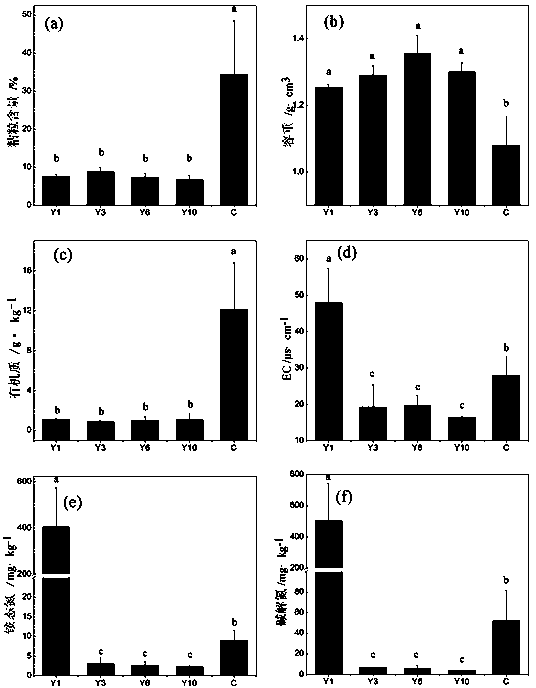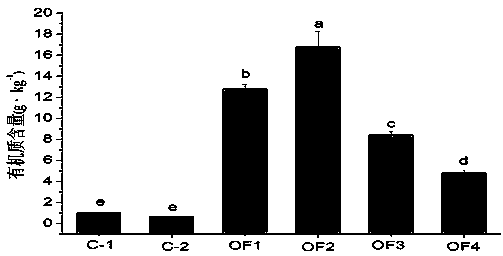Method for ionic rare earth mine tailing land improvement and vegetation reclamation
A technology for rare earth ore and tailings, which is used in land preparation methods, applications, agricultural machinery and implements to achieve the effects of absorbing moisture and dispersing water quickly, promoting dissolution and reducing soil bulk density.
- Summary
- Abstract
- Description
- Claims
- Application Information
AI Technical Summary
Problems solved by technology
Method used
Image
Examples
Embodiment 1
[0051] Example 1 Analysis of physical and chemical properties of ionic rare earth tailings soil
[0052] The present invention selects ionic rare earth ore tailings land with different abandonment times (1 to 10 years) in Dingnan County, Ganzhou City, Jiangxi Province as the investigation object, analyzes the ionic rare earth through the analysis of soil physical and chemical properties, and compares it with the surrounding unmined normal vegetation area Obstacle factors for vegetation reclamation in mine tailings land.
[0053] The main physical and chemical properties of the soil in ion-type rare earth mine tailings are as follows figure 1 shown, from figure 1 (a), (b) and (c), it can be seen that within 10 years of abandonment, the soil clay content of the tailing sand land is less than 10% (6.00%~9.66%), which is much lower than the soil clay content of the surrounding normal vegetation area ( 24.10 %~50.48 %); soil bulk density of tailing sandy land (1.25~1.43 g·cm ...
Embodiment 2
[0055] Example 2 Indoor experiment of four kinds of organic wastes on tailings soil improvement
[0056] 1. The physical and chemical properties of the tested soil and amendments are shown in Table 1.
[0057] Table 1 The physical and chemical properties of the tested soil and amendments
[0058]
[0059] Note: The soil-water ratio of 1:20 was used to measure the pH of rice straw, sawdust and kenaf biochar.
[0060] 2. Indoor experiment of four kinds of organic wastes on soil improvement of tailing sandy land (Pennisetum)
[0061] A total of 6 treatments were designed for the indoor pot experiment, as shown in Table 2.
[0062] Table 2 Indoor experiment of four kinds of organic wastes on the soil improvement of tailing sandy land (Pennisetum)
[0063]
[0064] Indoor pot experiments were carried out in a greenhouse, with a temperature of 24°C to 28°C during the day and 18°C to 20°C at night. Three parallels were set for each treatment, and 1.0 kg of soil and amen...
PUM
 Login to View More
Login to View More Abstract
Description
Claims
Application Information
 Login to View More
Login to View More - Generate Ideas
- Intellectual Property
- Life Sciences
- Materials
- Tech Scout
- Unparalleled Data Quality
- Higher Quality Content
- 60% Fewer Hallucinations
Browse by: Latest US Patents, China's latest patents, Technical Efficacy Thesaurus, Application Domain, Technology Topic, Popular Technical Reports.
© 2025 PatSnap. All rights reserved.Legal|Privacy policy|Modern Slavery Act Transparency Statement|Sitemap|About US| Contact US: help@patsnap.com



